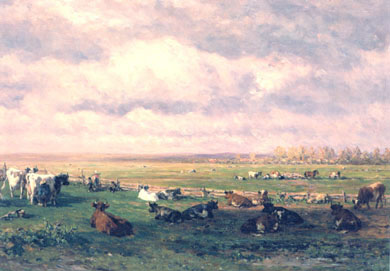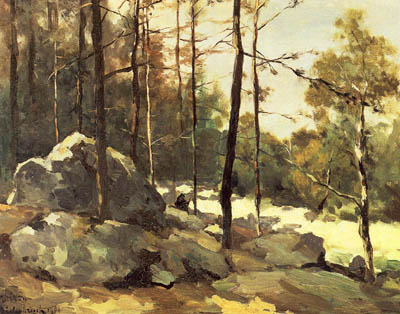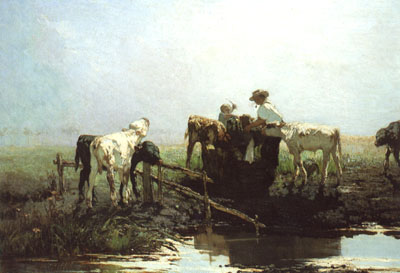The Hague School
After the great periods of Dutch art in the Golden Age of the 17th century, there were economic and political problems which diminished activity in art. The fine arts in the Netherlands enjoyed a revival around 1830, a time now referred to as the romantic period in Dutch painting. The most widely accepted paintings of this period were landscapes and paintings which reflected national history.
. 



At about this same time, the 1830's artists like Rousseau, Daiz, Troyon,and Corot found their way to Barbizon, a forested area near Fontainebleau.The emphasis of their work here was on painting nature as they saw it. This gave rise to the well known Barbizon school. Their example was followed in the 1850's by a few Dutch painters who gathered in Oosterbeek in order to work in the surrounding countryside. These painters had been influenced by the artists of the Barbizon School (and in many cases had even studied with them) and emulated these painters by registering their impressions with rapid strokes of color. An example is the following of a Barbizon scene by Hendrik Johannes Weissenbruch.

In the 1870's a number of these artists began working together in The Hague. The name "Hague School" was coined in 1875 by a critic who used the phrases "a new way of seeing and depicting things", "intent to convey mood, tone takes precedence over color", "almost exclusive preference for so-called 'bad weather' effects", and "gray mood." They were less interested in a faithful portrayal of what they saw than in conveying the atmosphere and impression of the moment. They painted mostly in subdued colors, with a penchant for gray. That is why the Hague School is sometimes called the Gray School.




If you are interested, check these sites for more detail on the Hague School or Hague School watercolors.